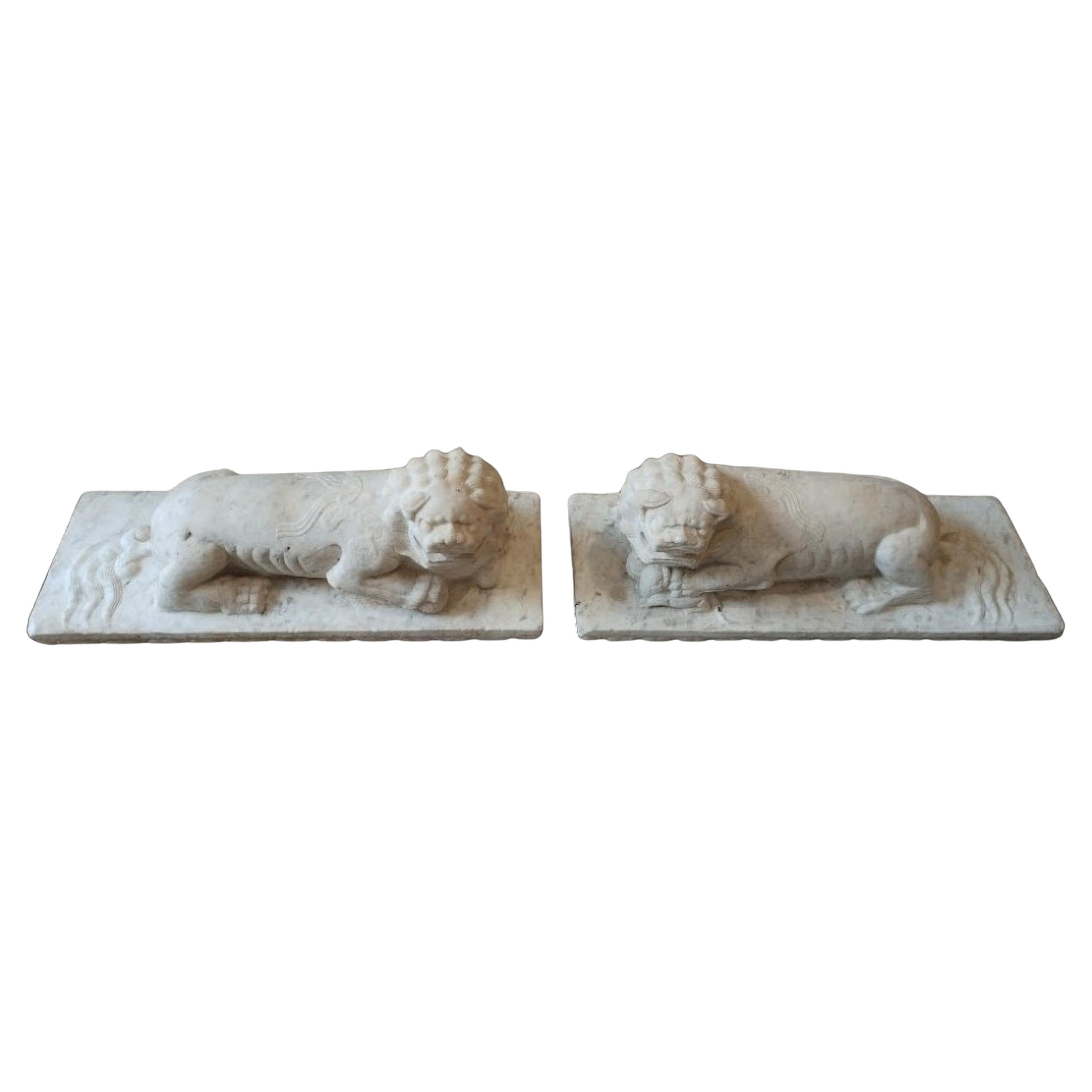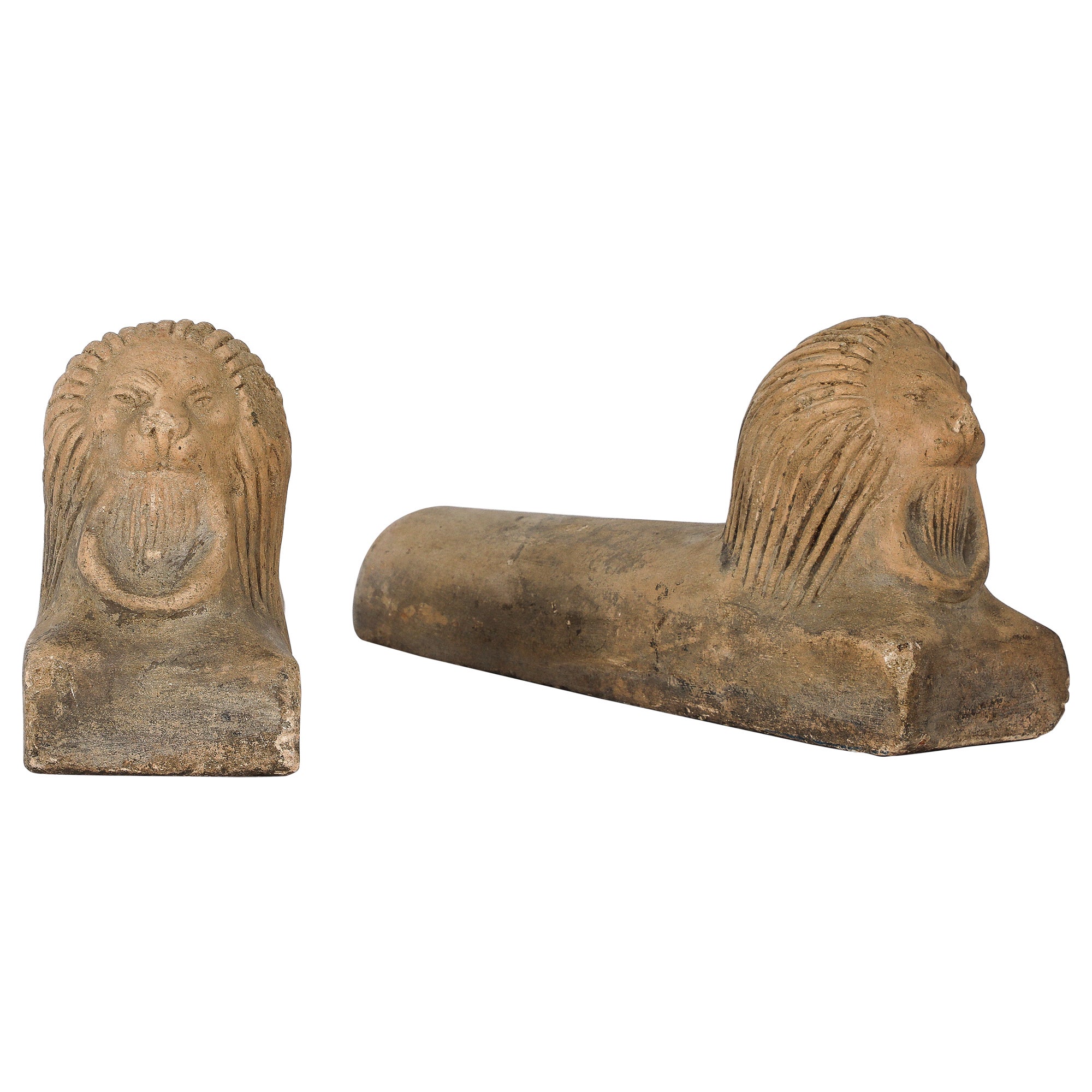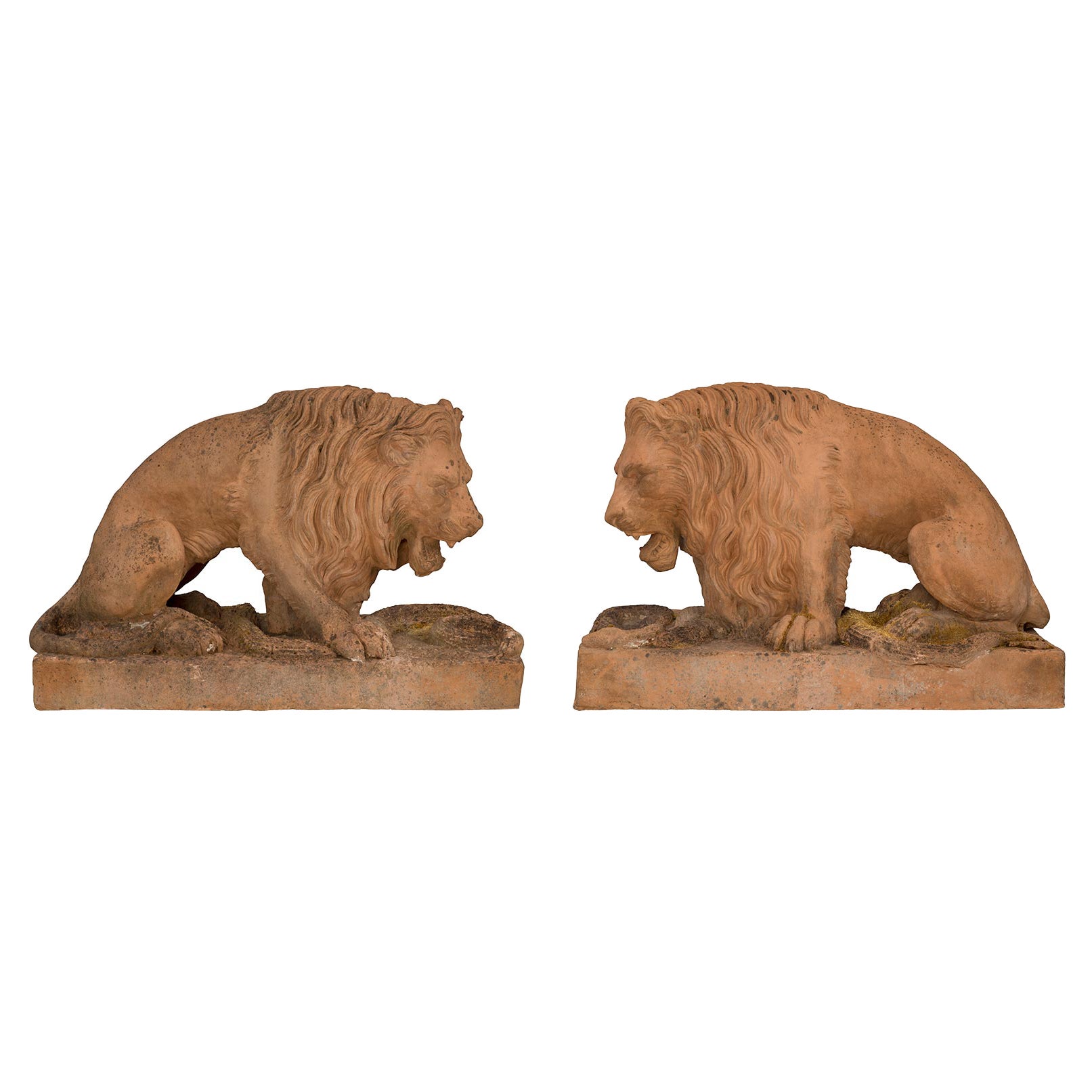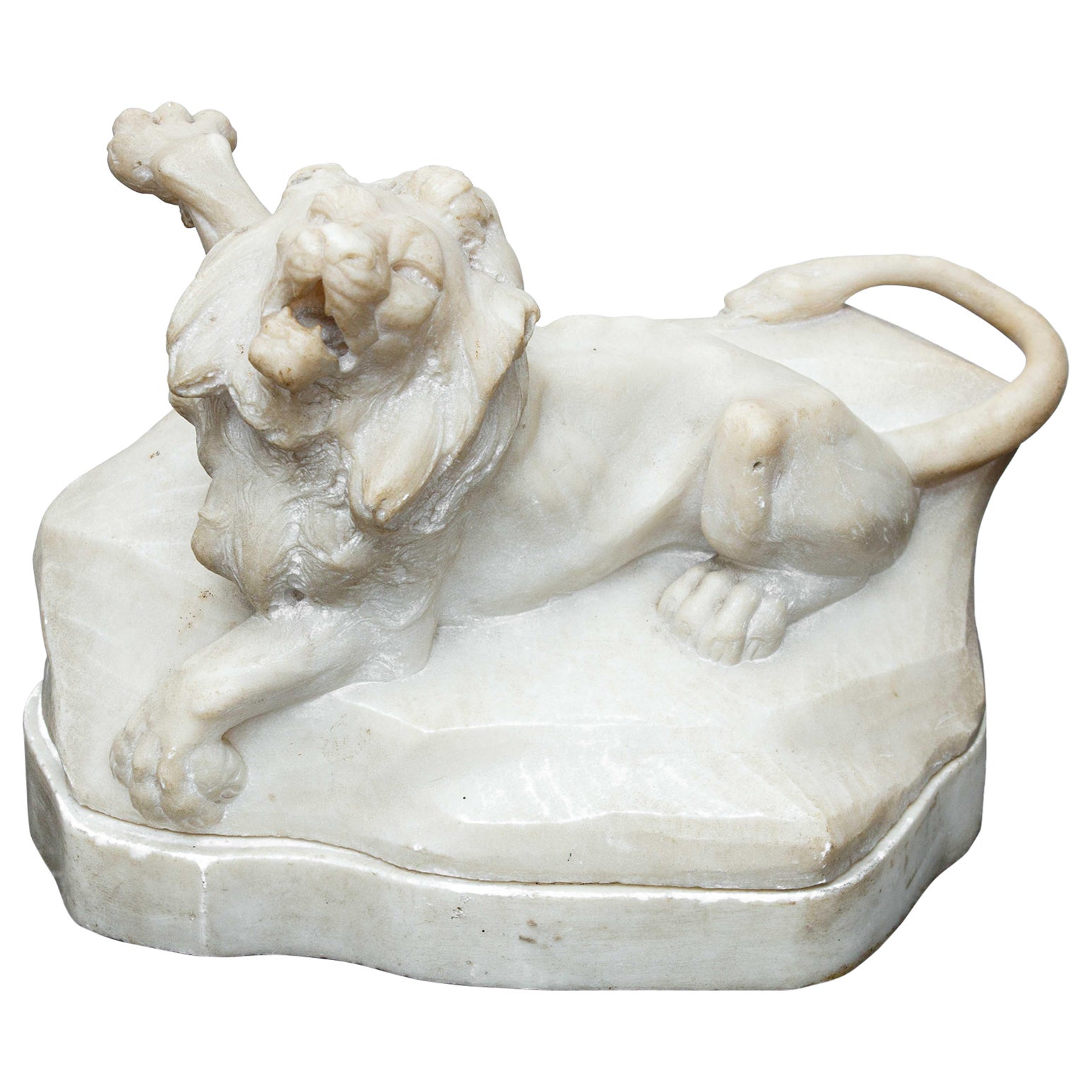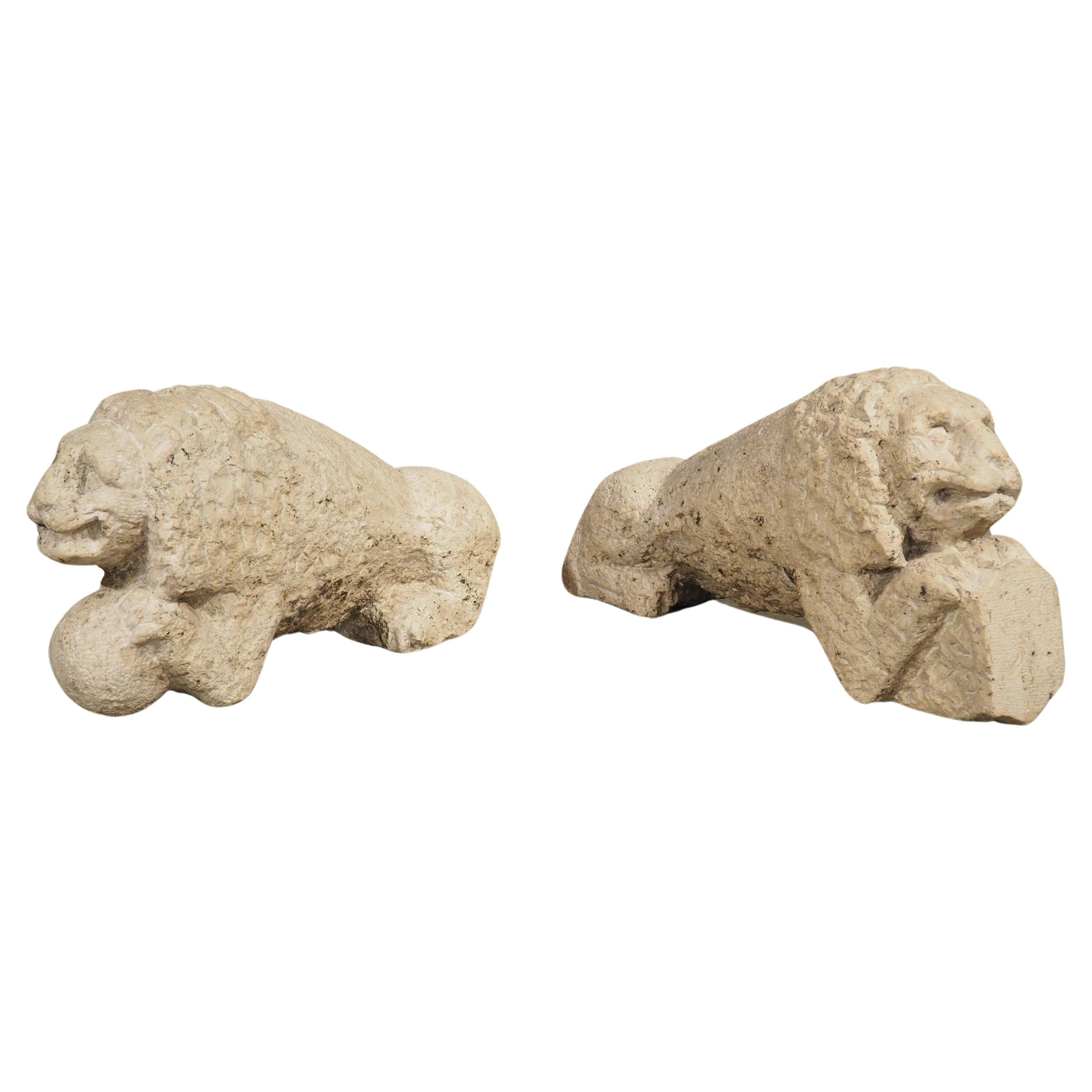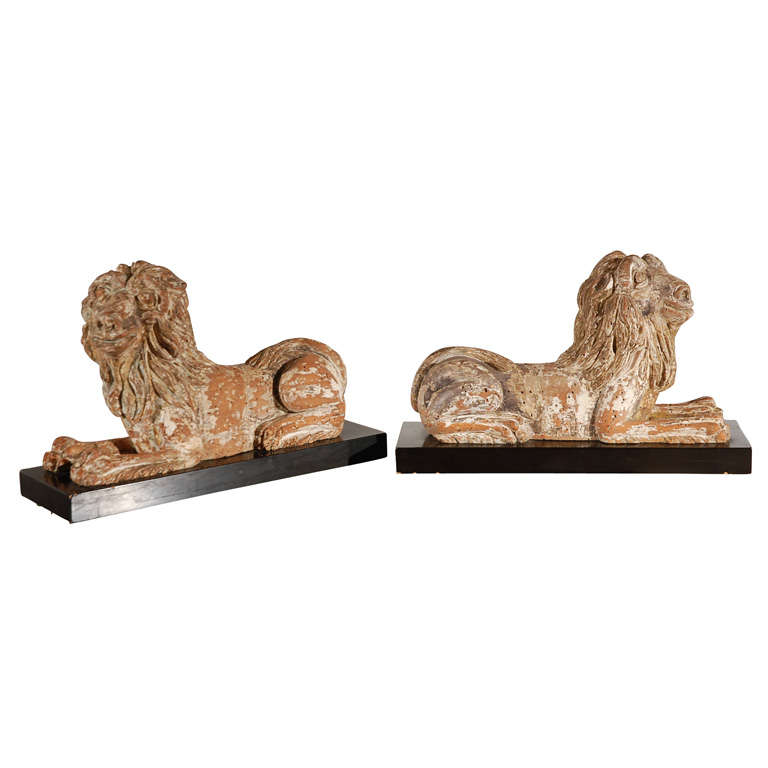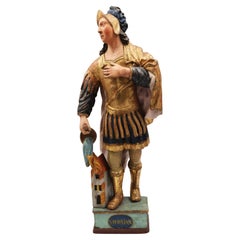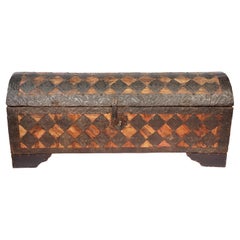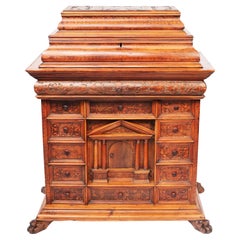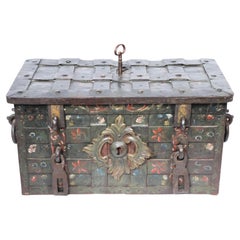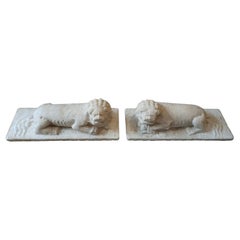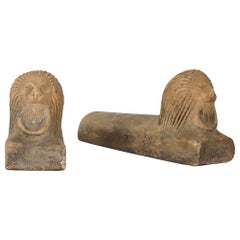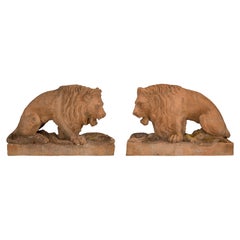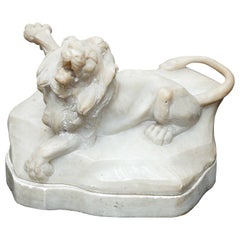Items Similar to Pair of stylophoric lions in yellow marble from verona, northern Italy, 16th-17th centol
Want more images or videos?
Request additional images or videos from the seller
1 of 12
Pair of stylophoric lions in yellow marble from verona, northern Italy, 16th-17th centol
$10,208.38
£7,518.45
€8,500
CA$13,887.71
A$15,432.31
CHF 8,086.69
MX$189,249.75
NOK 103,141.06
SEK 97,031.32
DKK 64,709.19
Shipping
Retrieving quote...The 1stDibs Promise:
Authenticity Guarantee,
Money-Back Guarantee,
24-Hour Cancellation
About the Item
Description
Two sculptures depicting crouching lions. On the backs of the lions are holes, from which the columns rose. This type of sculpture, typical of medieval architecture, takes the form of a styliphorous lion, which was used in the prothyrs and pulpits of early Christian and Romanesque churches to support columns, but also as a spiritual symbol with a message of protection. Indeed, the lion was seen in medieval bestiaries as a guardian, as it was believed to sleep with its eyes open, thus representing an apotropaic figure against evil.
Dimensions
HxWxD 34.5cm x 57cm x 20.5cm
Provenance
Private Collection
■Condition
Missing and defects. Breakage. Restorations.
- Dimensions:Height: 13.59 in (34.5 cm)Width: 22.45 in (57 cm)Depth: 8.08 in (20.5 cm)
- Materials and Techniques:
- Period:
- Date of Manufacture:1500-1700
- Condition:Replacements made. Repaired: Missing and defects. Breakage. Restorations. Wear consistent with age and use. Minor losses. Minor structural damages. Missing and defects. Breakage. Restorations.
- Seller Location:Brescia, IT
- Reference Number:1stDibs: LU10324244805392
About the Seller
New to 1stDibs
Joined in the past six months.
No Reviews Yet
Vetted Professional Seller
Every seller passes strict standards for authenticity and reliability
1stDibs seller since 2025
- ShippingRetrieving quote...Shipping from: Brescia, Italy
- Return Policy
Authenticity Guarantee
In the unlikely event there’s an issue with an item’s authenticity, contact us within 1 year for a full refund. DetailsMoney-Back Guarantee
If your item is not as described, is damaged in transit, or does not arrive, contact us within 7 days for a full refund. Details24-Hour Cancellation
You have a 24-hour grace period in which to reconsider your purchase, with no questions asked.Vetted Professional Sellers
Our world-class sellers must adhere to strict standards for service and quality, maintaining the integrity of our listings.Price-Match Guarantee
If you find that a seller listed the same item for a lower price elsewhere, we’ll match it.Trusted Global Delivery
Our best-in-class carrier network provides specialized shipping options worldwide, including custom delivery.More From This Seller
View AllSaint Florian, polychrome poplar wood, Central Europe, 18th century
Located in Brescia, IT
Description
Polychrome wooden centerpiece sculpture depicting Saint Florian. St. Florian is depicted as a Roman soldier holding a bucket extinguishing fire on a burning cathedral. In...
Category
Antique Mid-18th Century Austrian Louis XV Figurative Sculptures
Materials
Wood
Solid fir trunk lined with velvet and sheet metal, Italy, 16th century
Located in Brescia, IT
Description
Solid fir frame trunk covered with red velvet in fine squares arranged in a rhombus pattern and straight frames of embossed sheet metal with plant and heraldic motifs. Th...
Category
Antique 16th Century Italian Blanket Chests
Materials
Fir
Wooden coin cabinet, northern Italy, late 18th century early 19th century
Located in Brescia, IT
Description
Walnut and cedar wood coin cabinet, carved and painted. Linear front punctuated by twelve drawers framing a portal surmounted by a gable, which can be opened and removed,...
Category
Antique Early 19th Century Italian Neoclassical Revival Sideboards
Materials
Wood
Wrought iron chest and embossed sheet metal, Germany, 17th century
Located in Brescia, IT
Description
Chest chest made of wrought iron and embossed sheet metal. The sheet metal was cut from the solid by hot beating and carved with the chisel according to the development o...
Category
Antique 17th Century German Cabinets
Materials
Wrought Iron
Walnut carved wooden case, bone inlays, Italy, 17th century
Located in Brescia, IT
Description
Rectangular in shape, it bears facade, sides, and lid characterized by decoration with geometric inserts to create stylized floral motifs made of bone; front feet with fe...
Category
Antique 17th Century Italian Renaissance Cabinets
Materials
Wood
Saint Amable, polychrome poplar wood, France, 18th century
Located in Brescia, IT
Description
Polychrome wooden centerpiece sculpture depicting Saint Amable. Saint Amable of Riom was a Latin presbyter and was among the first Rium pastors. Tradition has it that at ...
Category
Antique 18th Century French Louis XV Figurative Sculptures
Materials
Wood
You May Also Like
Pair of Chinese Marble Lions from the 19th Century
Located in Madrid, ES
Pair of Chinese Marble Lions from the XIX century
Elegant lions of the Quing Dynasty carved in white marble with chisel. They are in good conditio...
Category
Antique 19th Century Chinese Chinese Export Animal Sculptures
Materials
Marble
Pair of Italian Stone Lions
Located in New York, NY
A charming and whimsical pair of Italian hand-carved stone lions.
Italy, early 20th century
Size: 6" high x 12 1/4" wide x 3 1/2" deep
Category
Early 20th Century Italian Animal Sculptures
Materials
Stone
$3,750 / set
Pair of Italian 19th Century Terra Cotta Statues of Lions, Circa 1850
Located in West Palm Beach, FL
A most impressive true pair of Italian 19th century terra cotta statues of lions, circa 1850. Each statue is raised by a rectangular base with a beaut...
Category
Antique 19th Century Italian Figurative Sculptures
Materials
Terracotta
Lion Marble sculpture from the 17th century
Located in Milan, IT
XVII Century
Lion
Marble, 30 x 43 x 25
The object under consideration is configured as a marble sculpture referable to the 17th century, characterized by a strong, visceral langua...
Category
Antique 17th Century Italian Animal Sculptures
Materials
Marble
Rare Pair of Antique Carved Stone Lions from Italy, Circa 1600
Located in Dallas, TX
These utterly captivating, hand-carved stone lions hail from Italy and date to circa 1600, possibly even earlier. Their regal couchant (lying down) posture adds an air of majestic charm to any setting. One lion gracefully rests its forepaws on a stone ball, while the other clutches a coat of arms shield. They are carved in the same stylistic manner as many of the medieval lions...
Category
Antique Early 17th Century Italian Medieval Animal Sculptures
Materials
Stone
Late 17th to Early 18th Century Carved Seated Lions
Located in Los Angeles, CA
Very rare, carved Limewood Mythological Reclining Lions, probably Italian. Mounted on base.
Category
Antique 18th Century and Earlier Unknown Animal Sculptures
$12,750 / set
More Ways To Browse
Verona Marble
Colonne Antique
Thai Wood Carving
Thailand Wood Carvings
Chinese Guanyin
Chinese Hand Carved Bamboo
Gilt Wood Buddha
Japanese Wood Bear
Netsukes
Chinese Soapstone
Chinese Stone Statue
Soapstone Chinese Furniture
Asian Bird Box
Japanese Koi
Asian Root Furniture
Asian Carved Wood Wall Art
Japanese Netsuke
Cast Iron Japanese
